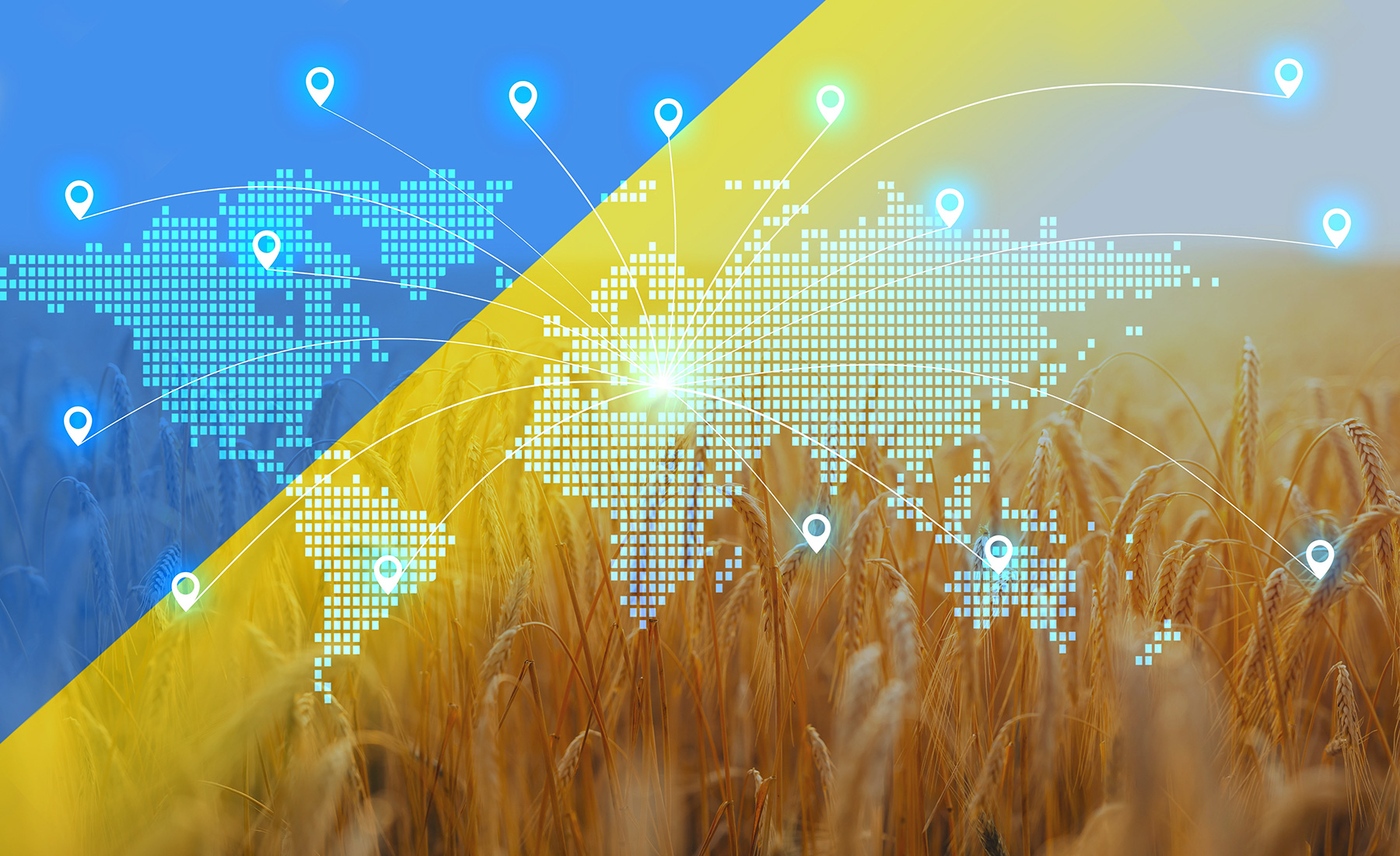The global supply chain consequences of the Russia-Ukraine war

Global supply chain illustration
This week marks the one-year anniversary since the Russia-Ukraine war began, when Russia invaded Ukraine after supporting the separation of Ukrainian territory. The impact has been global. Immediately, aid agencies worried that Ukraine’s grain would be stuck in ports, unable to reach countries that rely on it. This was just one example of how the regional conflict has forced countries around the world to source food, raw materials, fossil fuels and other key items from new trading partners.
Asoo Vakharia, a supply chain researcher and McClatchy Professor in the University of Florida’s Warrington College of Business, has been tracking trends in these global disruptions. While economic 2022 data is still being finalized, Vakharia discusses what we know about the disruption from the war, how countries are coping with the changes, and future supply chain challenges.
What did Ukraine and Russia specialize in exporting before the war?
Prior to the war, Ukraine’s top export was agricultural products (46%) followed by manufactures (42%). Manufactures are what we call semi-finished products. So you've imported some raw materials, produced some semi-finished materials and exported them out.
Ukraine’s primary export destinations were the European Union (39%); China (12.1%); Turkey (6.1%); and Russia (5.1%). Russia’s top exports were fuels and energy products (63%), followed by metals (10% percent), machinery and equipment (7.4%), and chemical products (7.4 %) with top export destinations being the China (12%), Germany (9%), and the Netherlands.
It is worth noting that Russia produces about 25% of the world’s nitrogen fertilizer and is a major supplier of energy to the European Union. Wheat exports from Russia and Ukraine accounted for 28% of global wheat exports.
How did the start of the conflict affect these export markets?
Grain exports out of Ukraine dropped significantly at the start of the war with some recovery through the Black Sea Initiative (an agreement allowing Ukraine to export grain). Declines in agricultural exports will be highly significant such 50% in sunflower oil, 25% for maize and a decrease of 10% for wheat.
In addition, there is a significant decrease in fertilizer exports from Russia. This is particularly troublesome since it is essential to growing and eventually harvesting grain.
Who is most harmed by the disrupted exports from these two countries?
Those countries that depended on Ukraine and/or Russia for key imports are most vulnerable. For example, many African countries rely on grain from Ukraine and Russia to support more than 50% of their domestic consumption. Unfortunately, these countries do not have the buying power to shift to higher-cost sources and thus, one direct effect is grain shortages in Africa. A second obvious impact of the shortages and disruptions is the increase in inflation across the world stemming from higher prices.
We’ve heard a lot in the news about Europe’s reliance on Russian natural gas for energy. How bad is it?
A lot of natural gas supply for Europe comes from the Nord Stream pipeline out of Russia, which is now limiting the supply it sends through the pipeline. This supply shortage has resulted in significant price increases. For example, in the first six months after the start of the conflict, natural gas prices rose by 120-130% and coal prices rose by 95-97%. These shortages and corresponding price increases might be here for some time since alternative sources are either not available for technological reasons or simply do not exist.
Have U.S. supply chains been affected by the war?
In the U.S., the war has restricted supply of key metals imported from Russia. For example, 30% of platinum group elements, 13% of titanium, and 11% of nickel imported into the U.S. were sourced from Russia and these are no longer available. Considering that batteries powering automobiles and electronics use nickel as a primary element, these shortages have disrupted the production of important goods. Titanium shortages are also of significant concern since it is one of the strongest metals used to manufacture a variety of industrial products.
How else is the Russia-Ukraine war affecting global supply chains?
Like we’ve discussed, global food and fertilizer supply chains are already being impacted due to supply shortages and higher prices. An increased focus on developing additional sources of key grains as well as on better structuring the food supply chain are of critical importance.
The Russia-Ukraine conflict and other disruptions, like the COVID-19 pandemic, have fueled an increasing interest in reshoring as an alternative strategy. The underlying notion is that locating suppliers in proximity to assembly and manufacturing sites could alleviate product shortages. Several leading organizations have announced plans to build supply operations closer to the markets they serve.
These strategy shifts in supply chains will significantly impact the transportation infrastructure within the U.S. This additional demand on domestic supply will create opportunities and threats for different transportation modes. Accelerating the rate at which infrastructure improvement projects are being pursued as well as a better management of current transportation resources is imperative. Identifying alternative supply channels insulated from political and external influences will be another priority. This can be better achieved by developing strategic alliances with countries in Africa to ensure more reliable sources of key metals and by entering into joint ventures with Australian companies as a source for key ores.
